The Complete Trading Course: Price Patterns, Strategies, Setups, and Execution Tactics
$34.86
| Author(s) | |
|---|---|
| Format |
|
| Pages |
398 |
| Publication Year |
2011 |
The Complete Trading Course provides aspiring traders with a detailed description of methods to analyze markets, spot profitable trading opportunities, and execute trades properly. Using a variety of approaches―such as Candlesticks, Elliott Wave, Dow Theory, and others―this book shows you how these methods overlap to identify tradable moments in the markets. Author Corey Rosenbloom skillfully explains how to identify trades based on price trend, momentum, and volatility―and how to make decisions confidently and maintain that confidence throughout the trade.
Author’s Note:
The Complete Trading Course progresses from a solid foundation of time-tested price principles through modern charting strategies into specific setups, and I recommend progressing through the book in the order I have arranged the material. I sought to answer the question “where do I begin in my analysis?” and have arranged the book with the answers unfolding in a journey through the material.
We begin our journey in Chapter 1 which outlines the foremost price principle on the importance of price trends, how to define these trends, what constitutes a true reversal, and how to frame the remainder of your analysis within the context of the trend structure. After learning how to recognize trends, Chapter 2 seeks to assess the health of a trend in motion by defining momentum and how it confirms a new trend and then disconfirms a mature trend. By learning how to identify momentum divergences, you can anticipate the end of a trend prior to the official reversal signal. Being a foundation principle, momentum’s leading edge also explains why we take certain specific trade setups that we do, and how momentum factors into price patterns. The last of the price principles, Chapter 3 details the Price Alternation Principle, which explains why some indicators work well in certain environments and then fail in others. The principle also lays the groundwork for range-trading, mean reversion trading strategies, which give rise to breakout strategies that can lead to large profits at the exact genesis of a new move in the market.
Part 2 focuses on modern-day strategies and charting tactics to compliment your analysis from the foundational price principles. Chapter 4 explains how to identify effective candle patterns on the charts, and contains a unique step-inside perspective of each candle pattern described, cutting to the heart of why the pattern is important. You will undoubtedly be familiar with some of the popular price patterns in Chapter 5, but I explain not just how to recognize and trade the pattern, but how the pattern derives its application from one of the foundation price principles described in Part 1.
I explain why it is not enough simply to recognize a pattern—particularly in today’s sophisticated markets. Much has changed in the more than 70 years since early chartists quantified these patterns. In Chapter 6, I explain how to draw Fibonacci retracement grids, how to find Fibonacci price confluence, and how a Fibonacci retracement grid assists your trade identification, entry, and exit decisions, all while keeping the examples current and simple to understand; Fibonacci analysis need not be complex. I conclude the section on modern-day strategies by explaining the Life Cycle of a Stock move, from accumulation through realization, and into the final stage of distribution, explaining insights into how professionals behave against the crowd at all stages. The chapter includes a quick description on how Elliott Wave complements Charles Dow’s original work on trends, and how both techniques combine in today’s world of active trading.
No book on trading strategies would be complete without a discussion on edge, execution tactics, trade setups, and how to put the information into practice in real-time under conditions of uncertainty and heightened emotion. Part 3 begins in Chapter 8 with a detailed discussion on risk management, edge optimization, trade execution tactics, and expectancy. Unlike other books on trading tactics, I explain the importance of combining these factors into a strategy that fits your unique personality, making a careful distinction between conservative and aggressive tactics in all the trades you take. Chapter 9 combines all that we have learned in The Complete Trading Course into the four components of every trade, as well as the two broad categories of trade setups and the four specific types of trade setups, all of which reduces the uncertainty of a trading decision into four categories of breakouts, retracements, reversals, or fades. The final chapter encourages you to use what you have learned and create your own specific trade setups with a discussion on how to do so, and a detailed explanation of the Impulse Buy trade, Impulse Sell, Cradle Buy trade, and Cradle Sell.
With a firm knowledge of basic price principles, specific trade strategies for today’s markets, information on edge and execution, and a clear discussion of trade setups, you will be fully equipped to take your trading to the next level and formulate your own personal strategies in your trading plan that lead you on your lifelong journey to trading success.
Contents:
- Supremacy of the Trend
- Momentum’s Leading Edge
- Price Alternation Principle
- Candlestick Charting
- Examining Price Patterns
- Fibonacci Tools
- Following the Life Cycle of a Price Move
- Edge, Expectancy, and Execution
- Four Basic Trade Setups
- Specific Trade Setups for Today’s Markets
The Complete Trading Course: Price Patterns, Strategies, Setups, and Execution Tactics By Corey Rosenbloom pdf
33 reviews for The Complete Trading Course: Price Patterns, Strategies, Setups, and Execution Tactics
Clear filtersOnly logged in customers who have purchased this product may leave a review.

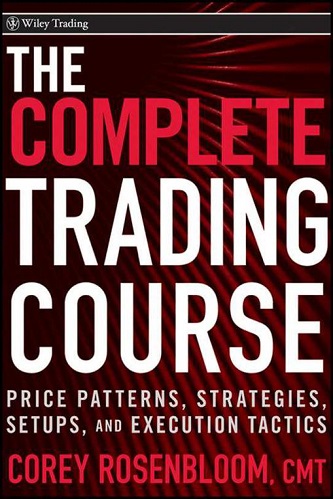

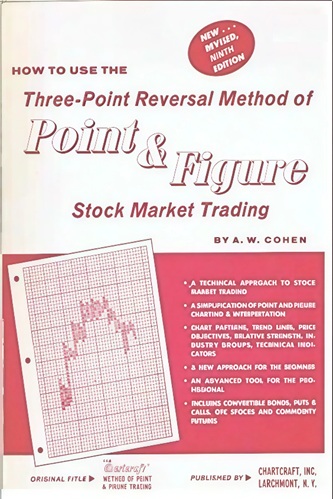
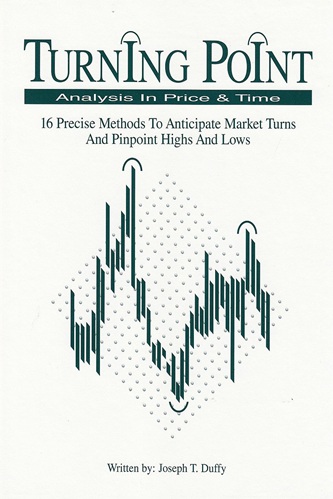
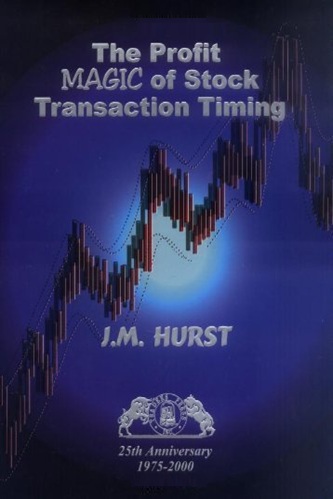
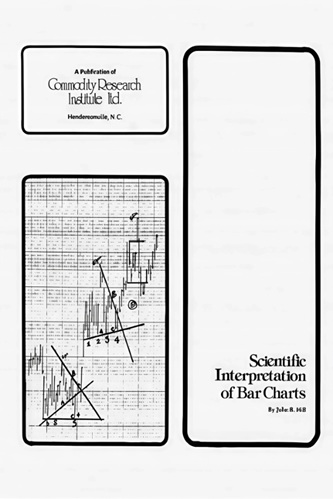
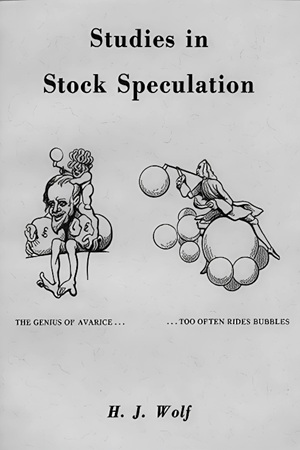

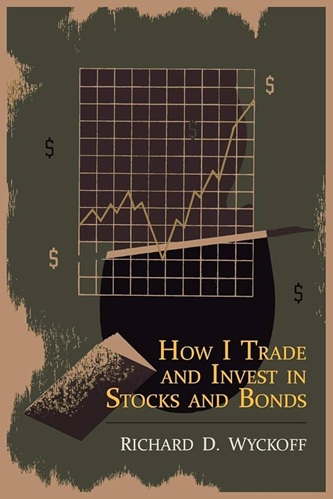
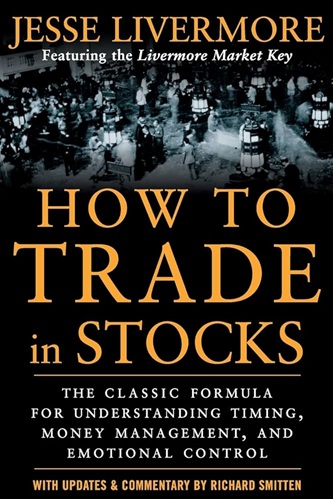
Bentlee Salinas (verified owner) –
This is a great book, it shows you in a detail the best way to trade, and gives the confidence to go through your goals.
Ryleigh O’Donnell (verified owner) –
Every new trader should start with this book. You may not end up trading this way. It may not be your style. But, you should at least learn how to trade Corey’s way. The book provide significantly more than adequate coverage of technical concepts. Practice is important.
Peyton Landry (verified owner) –
I don’t think I’ve come across a single book that provides everything you need to know to really succeed in the trading world but this book has made a great contribution to my knowledge. I’d recommend it to any aspiring trader.
Kayleigh Hansen (verified owner) –
The best book explaining difference between Trending and trading concepts. I never read it so clearly explained.
It also explains very well how to identify trend and when to use which indicator with clear crisp examples.
Kace Nunez (verified owner) –
This is by far the best book about trading course. the book deal with lots of interesting subjects like candlesticks, (there are 6 o 7 candlesticks but there are the more interesting if you want to take part in the trade) price patterns, averages, fibonacci retracements and so on. I really appreciate the style the author gives to this book, with great accuracy in describing his subjects.
At the end of this trading course there are two strategies in order to get into a trade.
I got lots of interesting information I would implement in my strategy and tactics.
Kannon Wiggins (verified owner) –
There was big anticipation and expectation when I started to read Mr. Rosenbloom’s ‘Complete Course’ book. It didn’t take long to realize that his approach succeeds in teaching the details of technical analysis but in a style that is captivating to the novice or experienced trader. Whether his writing or presentation style, the author has the knack of communicating at a level of simplicity that sparks interest without the over usage of algebraic minutia that can at times intimidate even the experienced trader.
As a manager of risk, I find the criticality of probability and edge to be a key essential to the trading success formula. The ‘edge theme’ starts from page one until the concluding thoughts section. I have built my trading business using a spin-off of Corey’s ‘crable trade’ setup described in the book. Combined with his analysis of life cycle price movement as a form of trade setup confluence, this principle alone is worth the price of admission.
Jasper McCormick (verified owner) –
I just completed reading this book and i simply loved it!! The author has explained most of the important technical aspect of trading. When i started reading this book i used to think i know what one needs to know about trading but this book has taught me so much that now before placing a trade i at least know what would be the probability of going that trade in my favor and if it does not (as Corey as correctly mentioned – you only have 47.5% chances to profit from that trade) then when should i exit. It has taught many more things that i wish i knew even before i placed my first trade 🙁
I have definitely become a better trader now and want to read more and more about trading. One thing i am sure is – you would not be wasting your time if you read this book.
Thank you so much Mr. Corey Resenbloom for this wonderful book.
Faye Flynn (verified owner) –
The subject-index pages of this book are offered so that prospective buyers like myself can examine the contents before making a purchase. In my own case, I was searching for an excellent book on how to intelligently optimize stock-market indicators: both individual indicators as well as groups of indicators.
This book indeed mentions and discusses indicators purported to assist traders in various markets. However, its subject index does not mention ‘indicator optimization’ or even the word ‘optimization’ – which I deem to be a very important step for any serious trader or group of traders to take, prior to making a trade. Nor does the subject index mention the word ‘robust’ (see my comments below).
The reason for browsing through this book before making a purchase is straight-forward: for several years I have been applying leading-edge optimization techniques and multi-dimensional-systems approaches to trading. I hoped to find, in the subject index (of this book), at least a hint of information that might be useful to incorporate in the trading algorithms that I develop. I apply a modified version of the Taguchi experimental approach, as well as the Mahalanobis-Taguchi-System approach, to stock-trading indicators.
What I was looking for in this book was not there. As far as I can determine, the book does not contain such vital trading information. Without an indicator that is both optimized and robust, the trader is at the mercy of the laws of chance. That’s not good enough for me – I need to know that I have a positive trading edge before engaging in a trade.
This particular book is not for me, and it may not be for you either – unless you simply want to use the suggested indicators ‘as is’, without creating a series of optimized ‘robust’ indicators that work well with multiple stocks under widely different market conditions.
Oakleigh Castro (verified owner) –
Perhaps a more accurate title for this book would have been The Complete Technical Trading Course. That is what we’re talking about here – a front-to-back approach to applying technical analysis to trading. This is not, however, a survey book that attempts to walk the reader through all the various sorts of technical methods and techniques. The author, instead, focuses on the tools he actually uses in his own market analysis and trading.
The book starts off talking about trends, both in terms of defining them and in terms of indentifying them. It then progresses into the subject of momentum, and that is followed by a chapter focused on market phases. All of this lays the groundwork for the second part of the book where it gets into strategies and tools. These include candlestick charting, price pattern analysis, Fibonaccis, and Elliott Wave techniques. The final section of the book focuses on trade set-ups and strategy execution.
It should be noted that this is NOT a trading system book. It’s about analyzing the markets and identifying good set-ups. If you’re looking for something mechanical you’ll want to look elsewhere. Also, the author is very much a stock market oriented trader, and that is reflected in the text. This doesn’t mean the methods and concepts are not applicable to other markets, however.
Overall, I’d say this is the exact sort of book I’d recommend to those readers interested in seeing how technical analysis can be applied in trading. It’s well structured and loaded with examples. I have a personal pet peeve with the standard internal formatting of Wiley Trading books, but that’s not the fault of the author and it doesn’t really detract from the message or lessons. Oh, and the bibliography is huge for those interested to extending their studies.
Bottom line: If you want a nitty gritty detail-oriented book on how to apply technical analysis techniques and methods, The Complete Trading Course fits the bill quite nicely.
Frida Livingston (verified owner) –
If your main aim is to understand more about technical indicators, this book gives you an introduction to them, sans the math. It also elucidates what some technical terms are, like accumulation, range expansion etc. There are chapters on Fibonacci levels, candlesticks (doji, graveyard etc), some setups (head and shoulders, bear flags). If you’re just starting up and have an interest in these, I feel this could be a useful book.
For those looking for strategies, and pitfalls and warnings about using these setups and indicators, you won’t find them here.
Cory Porter (verified owner) –
great
Kingsley Chang (verified owner) –
The book doesn’t have a great progression really just jumps right in and doesn’t really give any background knowledge just assumes the reader is an exlert
Brynleigh Nixon (verified owner) –
Complements the The Life Cycle of Stocks by the same author, Corey Rosenbloom
Nikolas Pope (verified owner) –
Simplifies the Trading process for the beginners
Macie Rush (verified owner) –
Good read. I have read some books that you knew the author was very smart but just didn’t no how to get the information out in away that you could understand. This book is informative and a easy read.
Kaylie Collier (verified owner) –
Better than many of the trading books I have seen. I would recommend it for the less experienced trader.
Esme Fitzgerald (verified owner) –
Excellent book. Gives a full overview about trading in a simple language. It s a must read book for someone interested in becoming a trader.
Kye McMillan (verified owner) –
This book is a basic and complete book on trading just as advertised. The author is a very good writer who explains the topics very well in an understandable manner.
Adan Frost (verified owner) –
Well written book, lengthy, overwritten. Corey presents good concepts and things that work in the market. This book could be condensed into 15 pages.
Mya Ellison (verified owner) –
Really the best book on trading I have found. I am still a novice and have read a lot of different books on trading but this is (as the title states) the most complete trading course there is . One you will study and read many times. I have had little success in trading but I am excited about this book. Well done with no gimmicks.
Braelyn Melendez (verified owner) –
Great starting book! and lots of stuff for folks who are already on there way!! Nice step by step and great book to have for reference.
Lian Grimes (verified owner) –
I’ve read a lot of books on trading and technical analysis, and with the majority of them I’ve had to read through a ton of pages just to find one or two gems of new wisdom. Most books just rehash the same material, and bring little to the table. However, I can honestly say every chapter in The Complete Trading Course is worth reading. Not many technicians write about feedback loops, and Corey does a good job of explaining the psychology of market moves, and what traders should be looking for when doing their own analysis. Overall, a great book!
Ophelia Glass (verified owner) –
I wish that I had read this book before now, the things I’ve learned would have prevented some very costly mistakes in my portfolio.
This book not only explains the different elements of a chart (from indicators, to patterns, to candlesticks), it also explains the why. What is happening in the market to make the chart react in this fashion. What were the buyers and sellers thinking when this was happening.
After building an excellent foundation, Corey takes it to the next level and discusses strategy – using the principles taught earlier. It’s a good way to reinforce some very important lessons.
I plan to re-read this book, starting this weekend! (just to pick-up on things I may have missed on the first time.)
Thanks again Corey!
Capri Johns (verified owner) –
The content is comprehensive and certainly good for any new traders.
The author has demonstrated concepts with many graphs and examples. And on how to spot a possible trading position.
However, I feel that there’s a lack of content in exiting an existing position.
Some of the charts used to describe his concept have a long period. Such as a daily chart that spans over 3 years when describing an inverse head and shoulder pattern.
Personally, I will not be holding a trading position for such a long time.
Overall, this is one of the better TA books that I have read.
Recommended.
Moses Ingram (verified owner) –
this book sucks
Katie Bartlett (verified owner) –
Good Book
Meghan Case (verified owner) –
Mr Rosembloom has written a book outlining the essential principles of technical analysis, properly updated with new concepts developed after the first books on Dow Theory were written almost a 100 years ago.
In the 1980’s, when I started, beginners in Technical Analysis were asked to read Magee and Edwards, together with supplementary reading of Rhea. Then came John Murphy’s book which was a pathbreaker. Murphy’s book soon became essential reading, but did not replace the Magee book. Now, ‘The Complete Trading Course’ by Corey Rosembloom, may well become the first book to be read, with stdents asked to decide their specialization after reading this book. The book is complete since it covers most significant aspects of technical analysis. It is honest because it repatedly highlights the failings of most indicators and setups. This honest approach makes the book different from many other generalised technical analysis books. The book is modern since it often refers to many of the new writings in TA.
Corey has explained in detail the concepts of positive and negative feedback loops which I think adds value to the current body of TA thinking. His chapters on edge, four basic trade setups are useful for new traders (they are useful experienced traders also but for the new ones they are vital).
This book is not about trading setups. It is honestly titled as ‘The Trading Course’. It is a complete course for the 21st century. The book should be read by all budding traders. It is useful to experienced traders since it highlights in easy to understand language, almost all important trading concepts and ideas.
Paula Person (verified owner) –
Dont let the garish dust jacket scare you off. This is a great book. If you want to approach technical analysis in a simple and efficient manner, study the methods and lessons outlined within. Practice, set up the charts as illustrated, trade the setups, make notes on your game planning and execution and over time it will become second nature. Corey is an amazing teacher and there is no BS in here. I even would go so far as to say i wish he went into more depth in his later chapters on setups, but i think he did us a favor and kept it simple. These are the basic technical setups you need to master if you want to be a successful trader in any market.
Ambrose Avery (verified owner) –
You might find what your looking for to Trade
Edison McGee (verified owner) –
If you’re like me, you read everything you can get your hands on and then try to determine if it has any relevance to your continuing stock trading education.
I’ve read this book from cover to cover twice now – it’s an invaluable resource and loaded with concise, clear, actionable information. I highly recommend Corey’s book and now consider it as significant as Elder’s “Come into My Trading Room” and Link’s “High Probability Trading” (both of which I also refer back to again and again….)
If you are a complete newbie, you might want to start with a more basic book first to get a grip on basic trading terms (a Dummy book might be a good place to start) – but then come right back to this one so you’ll stay on track and learn from one of the best trader’s in the field.
This is a solid, scholarly work written in an extremely accessible manner. 5 stars – without reservation.
Royalty Sherman (verified owner) –
I actually had to read this book twice. This book is very good for those who want to learn the fundamentals of trading. If your an experienced trader this book this book will take everything that you do and breaks down the meanings and how they work. If your a newbie then you will learn the principles of the trade. I would make this required reading for all those who want to trade the market.
Kaiser Arellano (verified owner) –
I’m extremely grateful that I found this book. Corey does an amazing job at breaking down the fundamentals of technical analysis in a manner that makes them simple to understand and easy to remember. Corey’s work in The Ultimate Trading course has not only transformed my ability to trade, but the quality of my life. The techniques and strategies taught in this book are highly profitable, and it is wholly worth it to embrace them in your own practice. Corey clues readers in to how the big-dogs do it, and allows us to utilize those same tactics by showing us exactly what to do. Pairing this book with a book like Trading in The Zone and studying them religiously will put you ahead of 99% of traders. Thank you for writing this book, I will continue to study it for the rest of my life.
Joziah Wilson (verified owner) –
Corey R. has a great book here, a keeper for me. After several days of just applying the basic trend information to my intraday trades, I’ve begun banking more consistent gains, and have fewer losing trades. Most books I have read may have some information that helps, but none have changed my game so fast. Just note that I scalp FAANG and SPX options two hours a day, am not a professional, just a retail trader with a hobby, and that’s what I am basing this review on. There’s a lot of book left for me to read, but right away was happy to have bought this book that had information I could apply right away.